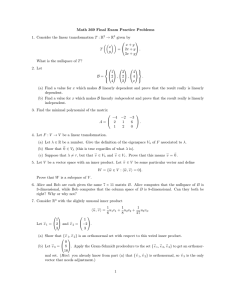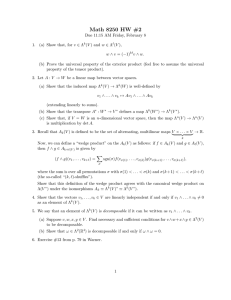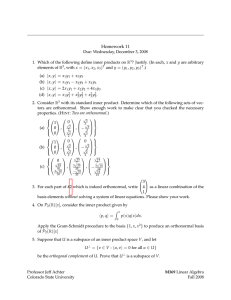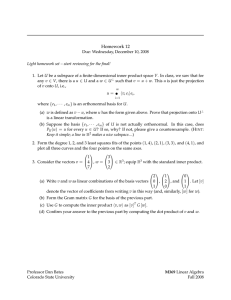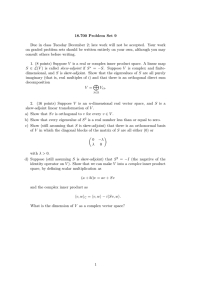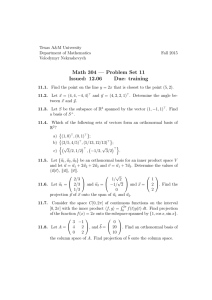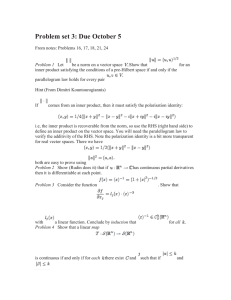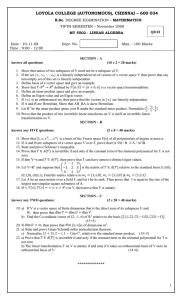Math 670 HW #2
advertisement
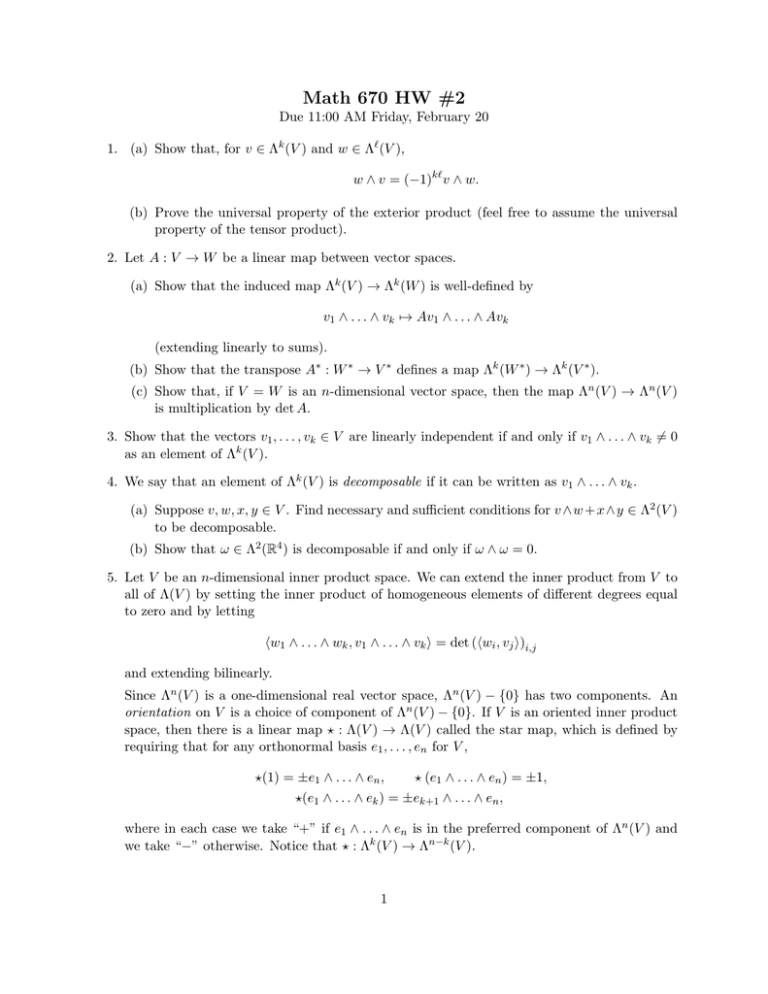
Math 670 HW #2
Due 11:00 AM Friday, February 20
1. (a) Show that, for v ∈ Λk (V ) and w ∈ Λ` (V ),
w ∧ v = (−1)k` v ∧ w.
(b) Prove the universal property of the exterior product (feel free to assume the universal
property of the tensor product).
2. Let A : V → W be a linear map between vector spaces.
(a) Show that the induced map Λk (V ) → Λk (W ) is well-defined by
v1 ∧ . . . ∧ vk 7→ Av1 ∧ . . . ∧ Avk
(extending linearly to sums).
(b) Show that the transpose A∗ : W ∗ → V ∗ defines a map Λk (W ∗ ) → Λk (V ∗ ).
(c) Show that, if V = W is an n-dimensional vector space, then the map Λn (V ) → Λn (V )
is multiplication by det A.
3. Show that the vectors v1 , . . . , vk ∈ V are linearly independent if and only if v1 ∧ . . . ∧ vk 6= 0
as an element of Λk (V ).
4. We say that an element of Λk (V ) is decomposable if it can be written as v1 ∧ . . . ∧ vk .
(a) Suppose v, w, x, y ∈ V . Find necessary and sufficient conditions for v ∧ w + x ∧ y ∈ Λ2 (V )
to be decomposable.
(b) Show that ω ∈ Λ2 (R4 ) is decomposable if and only if ω ∧ ω = 0.
5. Let V be an n-dimensional inner product space. We can extend the inner product from V to
all of Λ(V ) by setting the inner product of homogeneous elements of different degrees equal
to zero and by letting
hw1 ∧ . . . ∧ wk , v1 ∧ . . . ∧ vk i = det (hwi , vj i)i,j
and extending bilinearly.
Since Λn (V ) is a one-dimensional real vector space, Λn (V ) − {0} has two components. An
orientation on V is a choice of component of Λn (V ) − {0}. If V is an oriented inner product
space, then there is a linear map ? : Λ(V ) → Λ(V ) called the star map, which is defined by
requiring that for any orthonormal basis e1 , . . . , en for V ,
?(1) = ±e1 ∧ . . . ∧ en ,
? (e1 ∧ . . . ∧ en ) = ±1,
?(e1 ∧ . . . ∧ ek ) = ±ek+1 ∧ . . . ∧ en ,
where in each case we take “+” if e1 ∧ . . . ∧ en is in the preferred component of Λn (V ) and
we take “−” otherwise. Notice that ? : Λk (V ) → Λn−k (V ).
1
(a) Prove that if e1 , . . . , en is an orthonormal basis for V , then the ei1 ∧ . . . ∧ eik with
1 ≤ i1 < . . . < ik ≤ n and 1 ≤ k ≤ n give an orthonormal basis for Λ(V ).
(b) Prove that, as a map Λk (V ) → Λn−k (V ), ?? = (−1)k(n−k) .
(c) Prove that, for ω, η ∈ Λk (V ), their inner product is given by
hω, ηi = ?(ω ∧ ?η) = ?(η ∧ ?ω).
2
